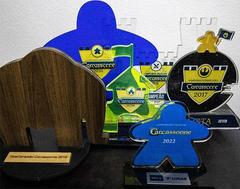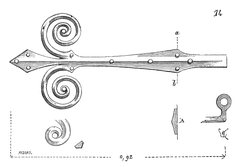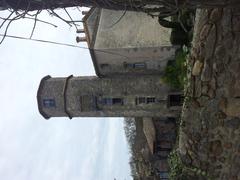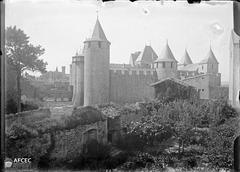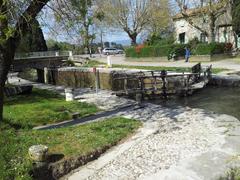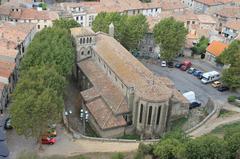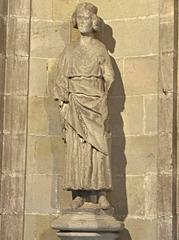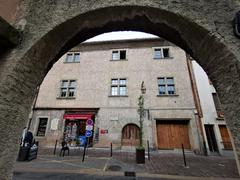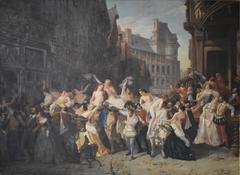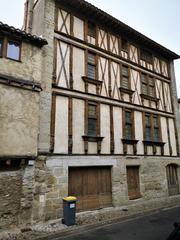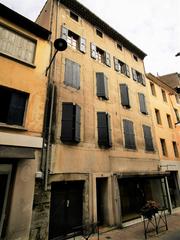Château de Pech Redon: Visiting Hours, Tickets, and Carcassonne Historical Sites Guide
Date: 14/06/2025
Introduction
Château de Pech Redon, perched atop the highest plateau of the Massif de la Clape in southern France, is a destination where history, architecture, and organic winemaking converge. Between Narbonne and the Mediterranean Sea, this estate encapsulates centuries of viticultural legacy, architectural transformation, and pioneering sustainable practices (Cantina del Mulino; Wikipatrimoine). Renowned for its limestone structures and Mediterranean grape varieties, Château de Pech Redon offers guided tours, tastings, and seasonal events that immerse visitors in the region’s rich culture and natural beauty (Vie d’Oc; Vigneron Indépendant). Proximity to Carcassonne and Narbonne makes it an essential stop for travelers keen to explore Languedoc’s historical and natural treasures (Winebnb). This guide covers visiting hours, ticketing, tours, architectural highlights, and practical tips to ensure a rewarding visit.
Table of Contents
- Origins and Early History
- Architectural Evolution and Features
- Visiting Hours, Tickets, and Tour Information
- Wine Tasting and Special Events
- Nearby Attractions and Regional Heritage
- Architectural Details and Conservation
- Environmental Setting and Landscape
- Artistic and Decorative Highlights
- Visitor Information & Practical Tips
- Frequently Asked Questions
- Conclusion and Call to Action
- References
Origins and Early History
Location and Historical Background
Château de Pech Redon is situated within the Languedoc region, atop the Massif de la Clape—a limestone outcrop with commanding views between Narbonne and the Mediterranean. Its strategic elevation and proximity to the ancient Roman port of Narbonne have anchored its agricultural and defensive roles for centuries (Cantina del Mulino).
Roman Roots and Viticulture
The Massif de la Clape was historically an island; sedimentation connected it to the mainland over time. Archaeological discoveries, including amphorae and wine presses, reveal continuous viticulture in this area for over 2,000 years. The château’s legacy is intrinsically linked to Languedoc’s evolution as a wine region.
Architectural Evolution and Features
Château de Pech Redon’s architectural journey reflects the transition from medieval fortifications to refined 19th-century elegance.
- Traditional Structure: The estate’s limestone buildings, thick stone walls, terracotta roofs, and arched entries are hallmarks of Languedocian rural architecture.
- Historical Transformation: Significant renovations were initiated by the Bousquet family post-1988, incorporating modern amenities while preserving historical character (Cantina del Mulino).
Visiting Hours, Tickets, and Tour Information
- Visiting Hours: Generally open Tuesday to Sunday, 10:00 AM to 6:00 PM. Closed on Mondays and major holidays.
- Booking: Tickets can be purchased on-site or reserved online (Official Website). Adults: from €12; children under 12: free; group/senior discounts available.
- Accessibility: The estate is accessible by car (15 minutes from Narbonne), with parking provided. Main public areas are wheelchair-friendly, though some vineyard paths may be uneven.
For special events, such as European Heritage Days, hours and access may differ. Confirm details before your visit (Journées du Patrimoine).
Wine Tasting and Special Events
- Daily Tastings: Sample renowned organic reds and whites during guided sessions that explain the estate’s sustainable winegrowing philosophy.
- Seasonal Events: Harvest festivals (September), wine-pairing dinners (summer months), and photography opportunities are periodically available.
Nearby Attractions and Regional Heritage
Château de Pech Redon is ideally located to explore:
- The medieval Cité de Carcassonne (UNESCO World Heritage)
- Roman ruins and historical sites in Narbonne
- Natural Regional Park of La Clape, offering beautiful hiking trails
These destinations complement the château experience for a varied itinerary.
Architectural Details and Conservation
Transitional Design
The château’s main building, constructed around 1480, bridges late medieval fortification and Renaissance style (Wikipatrimoine; POP Culture Gouv). A closed courtyard layout, vaulted halls, and defensive stonework signal its seigneurial past.
19th-Century Enhancements
Major updates in the 1860s introduced Second Empire grandeur, including:
- Classical symmetry and ornamental stonework
- Sculptural features by Isidore Nelli
- Modernized interiors with original fireplaces and staircases (Journées du Patrimoine)
Conservation Status
Château de Pech Redon is listed as a Monument Historique and benefits from ongoing preservation (POP Culture Gouv; Musique et Patrimoine).
Environmental Setting and Landscape
- Strategic Hilltop: The château commands panoramic vistas and serves as a landmark in the La Clape landscape (Wikipatrimoine).
- Parkland: Mature trees and landscaped grounds are open during select events (Journées du Patrimoine).
- Ecological Stewardship: The estate balances heritage with environmental sustainability (Musique et Patrimoine).
Artistic and Decorative Highlights
Second Empire renovations introduced sculptural mascarons and decorative stonework by Isidore Nelli, elevating the château’s architectural character (Journées du Patrimoine).
Visitor Information & Practical Tips
- Arrival: GPS navigation is recommended; parking is available.
- Getting There: Car is most convenient; limited public transport from Narbonne.
- Accessibility: Main areas are wheelchair-accessible; vineyard walks may be challenging.
- What to Bring: Comfortable shoes, sun protection, and layered clothing.
- Photography: Permitted in most outdoor and tasting areas; professional shoots require permission.
- On-Site Amenities: Restrooms, parking; limited picnic areas (ask in advance).
- Booking: Advance reservations are strongly advised (Winebnb).
Frequently Asked Questions
Q: What are the visiting hours?
A: Tuesday–Sunday, 10:00 AM–6:00 PM, or by appointment; closed Mondays/holidays.
Q: How do I book tickets?
A: Online via the official website or on-site.
Q: Are guided tours available?
A: Yes, book in advance for comprehensive tours and tastings.
Q: Is the estate family-friendly?
A: Yes, but tastings are for adults only.
Q: Is the château accessible for mobility-impaired visitors?
A: Main public areas are accessible; vineyard paths may be uneven.
Q: Are pets allowed?
A: Generally not inside buildings; leashed pets may be allowed on grounds—check in advance.
Q: Can I purchase wine on-site?
A: Yes; shipping options available for domestic and international orders.
Conclusion and Call to Action
Château de Pech Redon stands as an emblem of Languedoc’s historical, architectural, and viticultural richness—a must-visit for lovers of history, wine, and scenic beauty. Its blend of Roman roots, elegant architecture, and organic winemaking ensures a memorable experience (Vie d’Oc; Vigneron Indépendant). Pair your visit with nearby sites such as Carcassonne and Narbonne for a full cultural immersion.
Plan your visit:
- Book via the official website or Winebnb.
- Download the Audiala app for tailored guides and exclusive offers.
- Follow us on social media for updates and event news.
References
- Cantina del Mulino
- Wikipatrimoine
- Journées du Patrimoine
- Vigneron Indépendant
- Vie d’Oc
- Winebnb
- POP Culture Gouv
- Musique et Patrimoine de Carcassonne
